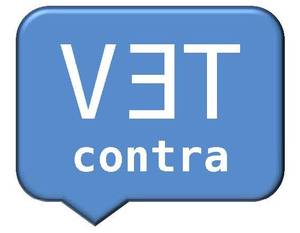VET Teachers and Trainers Contra Radicalisation
Vocational schools, secondary schools and vocational training institutions are often confronted with learners coming from different social, cultural or racial backgrounds. Due to the refugees’ wave that is sweeping over most European countries, we can expect even more inhomogenity in the years to come in schools and especially in vocational education. Under these circumstances, it happens often that frictions arise that are born out of prejudice, low self esteem and latent xenophobia. When such problems emerge and difficulties escalate, and when young people do not see positive perspectives, a critical minority, but in rising numbers, is attracted by extremist ideologies, such as Neo-Nazi groups or the djihadist movement of the „Islamic State“.
The Radicalisation Awareness Network of the European Commission states that „the best prevention is to stop people from getting involved in violent extremist or terrorist activities in the first place, or to convince them to turn away from such ideas and methods.... The people best placed to tackle the phenomenon of radicalisation are the so called first-liners – people in direct contact with targeted individuals or vulnerable groups of population.“
Teachers and trainers – called „first-liners“ above - need therefore new skills and competences to be better prepared to deal with intercultural tensions between diverse groups of learners and detect, at an early stage, indicators of radicalisation among their learners. However, many of them have had their vocational education years ago, and many of them are completely or partially unprepared to the changes in the way in which our society is organized and which conceptual aspects of radicalisation pose a threat. We will raise their awareness and identify initiatives, best practice examples and tools that help them do their work better, for example, to help find out who is at risk and the best way of helping people who need support. What tools and methods are available and most effective to provide this support? Who has undergone traumatic experience and shows a behaviour that is a consequence of post-traumatic stress disorder? How can a teacher detect such symptoms? Our project will provide vocational teachers and trainers with information and best practice about effective tools and methods, in order to help them do their work better. They will be able to acquire skills and knowledge to apply interventions in a preventive stage, and to focus on self-esteem, empathy towards out-groups and managing negative emotions. In the long run, this approach will lead to a better learning climate, better learning results and will reduce racism and xenophobia in the classroom.
Therefore, the objective is to equip teachers and trainers with skills and competences
• to convey to their students how to live and work successfully in a pluralistic society
• to deal with intercultural tensions between diverse groups of learners
• to detect indicators of radicalisation among their learners
• to identify who is at risk which is the best way of helping those who need support
• to apply interventions in a preventive stage
• to builds skills and motivation to take action against injustice
• to create a better learning climate, better learning results and
• to reduce racism and xenophobia in the classroom.
In order to reach these objectives, the specific objectives are
• to implement an e-platform that will support the access to all initiatives and learning materials identified and collected in the project, especially for teaching in multicultural groups that give background information how to handle groups with intercultural tensions, based on social learning, ethics of participation, social language, social and emotional intelligence, conflict solving strategies.
• to implement also an online interactive forum, in order to facilitate the exchange between educators and youth workers who are confronted with this phenomen and who will be able to obtain peer support and helpful advice also through these media.
• to make use of the new machine translation (MT) technology. It facilitates real-time translation and is already powerful enough to break down the language barrier between users from different countries.




